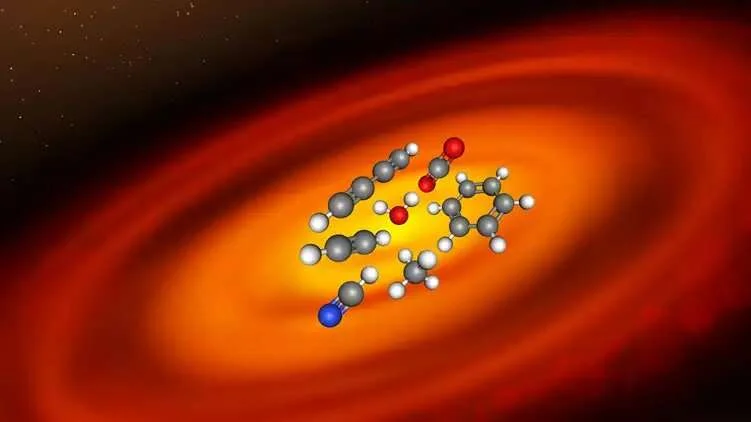Using the James Webb Space Telescope (JWST), researchers have analyzed data for the first time examining the chemical composition of disk regions around young stars where rocky planets form. Already at this stage, the data show that the disks are chemically diverse and rich in water, molecules such as carbon dioxide and organic hydrocarbon compounds such as benzene, and small particles of carbon and silicate. The ongoing JWST observing program, led by MPIA MINDS, which brings together several European research institutes, promises to provide revolutionary insight into the conditions before the birth of planets, while also determining their composition.
New observations of a sample of planet-forming disks around young stars with the Intermediate Infrared Instrument (MIRI) on the James Webb Space Telescope (JWST) provide a first look at how this powerful instrument will improve our understanding of terrestrial planet formation. Astronomers from 11 European countries have teamed up on the MINDS (MIRI mid-Infrared Disk Survey) project to study conditions in the inner regions of such disks where rocky planets are expected to form from the gas and dust they contain. They are taking the next step in deciphering the conditions of planet formation disks, a prerequisite for identifying processes that give rise to solid bodies such as planets and comets that make up planetary systems.
Initial results presented in two papers demonstrate the diversity of rocky planetary cradles. Discs range from environments rich in carbon compounds, including complex organic molecules such as benzene, to lumps containing carbon dioxide and traces of water. Like fingerprints, these chemicals produce unique markings in the spectra that astronomers acquire during their observations. The spectrum is an iridescent reflection of light, or as in this case, infrared radiation that breaks it down into the colors that make it up.
“We were impressed by the quality of the data produced by MIRI,” says Thomas Henning, director of the Max Planck Institute for Astronomy (MPIA) in Heidelberg, Germany. He is the Principal Investigator (PI) of the JWST Guaranteed Time Observation (GTO) MINDS program. “This wealth of spectral lines not only reveals the chemical composition of the material in the disk that eventually turns into planets and their atmospheres. It also allows us to determine the physical conditions, such as density and temperature, in and within these planet-forming disks, where planets grow”.













